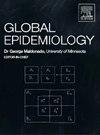All are not created equal: Method descriptions in an epidemiology publication differ among media summaries – A case study comparison
引用次数: 0
Abstract
It is common to see mass media headlines about health-related topics in traditional and online news outlets, as well as on social media platforms. What a consumer might not realize is that often these headlines are a distillation of results reported in epidemiologic publications. Journalists make decisions about what information to include and exclude, hopefully without compromising the main conclusions. In this exercise, sixty-three media articles that summarized one peer-reviewed journal publication (Zhang et al., 2021) describing results from a cohort study on coffee and tea consumption and risk of stroke and dementia were compared to determine the consistency of details among them. The most heterogeneity was observed in whether articles compared results with other literature. There was some variation in inclusion of a measure of frequency within the study population, and in details describing measurement of exposure. However, most of the articles were consistent in either including or excluding other methodological details in the main text. The results of the present comparison have implications for readers, researchers, and journalists. Readers must know that media summaries of peer reviewed studies are just that – summaries. It is likely that some information from the original source is not represented by the article, and that additional information might be necessary to craft an informed opinion on a given topic.
并非人人平等:流行病学出版物中的方法描述在媒体摘要中有所不同-案例研究比较
在传统和在线新闻媒体以及社交媒体平台上,经常看到有关健康主题的大众媒体头条。消费者可能没有意识到的是,这些标题通常是流行病学出版物报道的结果的精华。记者们会在不影响主要结论的前提下,决定哪些信息应该包括,哪些信息应该排除。在这个练习中,63篇媒体文章总结了一篇同行评议的期刊出版物(Zhang et al., 2021),描述了一项关于咖啡和茶消费与中风和痴呆风险的队列研究的结果,并进行了比较,以确定其中细节的一致性。在文章是否与其他文献比较结果时,观察到最大的异质性。在纳入研究人群的频率测量和描述暴露测量的细节方面存在一些差异。但是,大多数条款在包括或排除正文中的其他方法细节方面是一致的。目前比较的结果对读者、研究人员和记者都有启示意义。读者必须知道,媒体对同行评议研究的总结只是总结而已。很可能来自原始来源的一些信息没有在文章中表现出来,并且可能需要额外的信息来形成对给定主题的知情意见。
本文章由计算机程序翻译,如有差异,请以英文原文为准。
求助全文
约1分钟内获得全文
求助全文

 求助内容:
求助内容: 应助结果提醒方式:
应助结果提醒方式:


